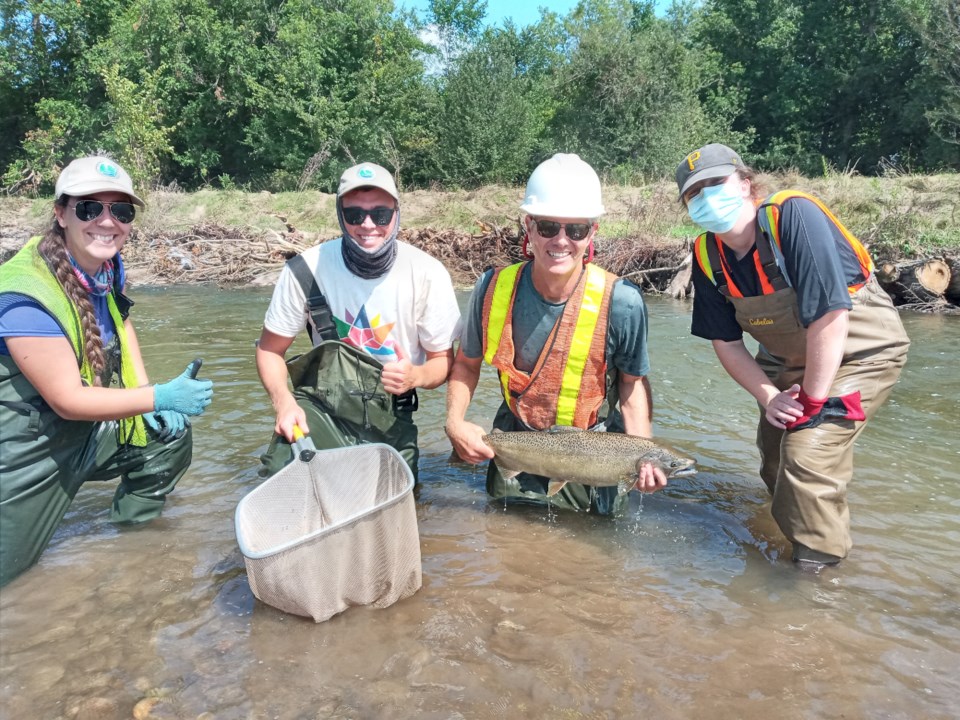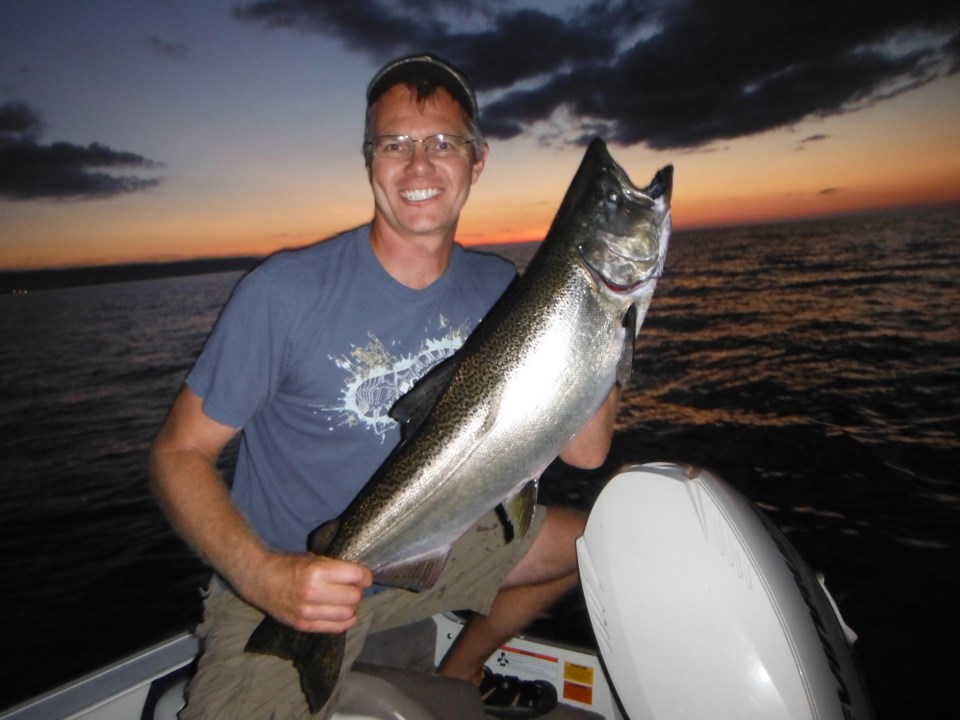Biologist Fred Dobbs appreciates fish for their part in the eco-systems he works to restore and because he likes to spend his downtime trying to catch them for a possible dinner option.
As the manager of stewardship services for the Nottawasaga Valley Conservation Authority (NVCA), Dobbs is hooked on the work of environmental restoration of the watershed’s rivers, streams and habitats, which can include physically tearing down old dams and planting shrubs along riverbanks to restore their former shape, size and function.
He gets good use out of his hip waders too, since they are necessary for his favourite hobby: fly-fishing. It may seem like a yin-yang situation, but Dobbs said both his hobby and his work help him appreciate and respect eco-systems.
“You give a little back by coordinating habitat restoration and you get to enjoy some of the fruits of your labour. Not in terms of catching or eating fish, although once in a while, but just in terms of experiencing their natural environment,” says Dobbs.
He’s combining both hobby and vocation for a workshop on fly-fishing at Bass Pro Shops Cabela’s Barrie this weekend.
The last time he did a similar workshop in spring, a week before trout season, Dobbs said he received overwhelmingly positive feedback. It also helps that workshops based on hobbies such as fly-fishing open up opportunities for conversations about the restoration of rivers, and volunteering for restoration projects.
“Several of the people who participated in the fly casting instruction did come out a few weeks later and started helping us planting trees,” says Dobbs.
The long-time NVCA staffer has seen an increase in volunteers for restoration projects following the COVID-19 pandemic, and has speculated that the lockdowns and grounded planes helped people realize the value of what’s in their backyards and the land around them.

“During COVID, a healthy environment was not something you travelled to on a plane but something that was important to have close to home,” says Dobbs, adding, “Reconnecting with natural areas close to home has enhanced interest in volunteering to plant trees, restore rivers and raise funds to improve local habitats.”
Home for the biologist is out in the country in Clearview Township. And he talks passionately about the abundance as well as sensitivity of fauna in the area. Dobbs explains that there are two native fish species at risk: lake sturgeon, which are considered “threatened,” and northern brook lamprey, which are of “special concern.” A third species, brook trout, is not yet designated as at risk. However, there are growing concerns about their habitat given climate change scenarios that threaten to decrease coldwater habitat area across Ontario.
While the NVCA’s Nottawasaga River Restoration Program works to improve the populations of the aforementioned varieties, it also benefits non-native yet economically important recreational ones such as rainbow trout, chinook salmon and brown trout.
The restoration program also focuses on recreating healthy floodplains as well as stable river banks and diverse in-water habitats for fish. These restored floodplains not only improve the river and provide habitat but they also store a lot of water and reduce flooding on adjacent lands and downstream. The Minesing Wetland is a natural feature that NVCA protects, which stores huge volumes of water and greatly decreases flooding further downstream at Wasaga Beach.
Growing up north of London, Dobbs has witnessed the changing landscape in southern Ontario. However, he finds that the pace has now accelerated.
“Close to the cusp of Toronto, you really see the aggressive front of new urban development sort of heading north and vaulting over the protected Oak Ridges Moraine and landing in our watershed,” he says.
Protecting habitat is as important as always. Dobbs was involved in decommissioning a dam on Black Ash Creek at the Petun Conservation Area property in 2020 to restore a coldwater stream, which is ideal habitat for caddisflies (which purify water) and brook trout.
What was once a tepid, brown pond is now a clear, tumbling, cold stream feeding Black Ash Creek and, eventually, Georgian Bay.
Dobbs says going back to sites like that one to witness the tangible difference, healthy, functional vegetation and increased fish populations is one of the best parts of his job.
It makes him appreciate all the time he spends standing in a river, whether that’s planting oats and dogwood on a bank, or swishing a fly back and forth on the surface of a river.
To the fly-fishing uninitiated, Dobbs recommends the 1992 Robert Redford directorial, A River Runs Through It, just so we know that “fly casting is very sort of fun and elegant and it has its own rhythms and it's very engaging and cool.” Dobbs exclaims, “It's just a lot of fun!”
The fly-fishing workshop by Fred Dobbs will be held on Saturday, June 17, from 11 a.m. to 1 p.m. at Bass Pro Shops Cabela’s Barrie (50 Concert Way). Drop-ins are welcome.



